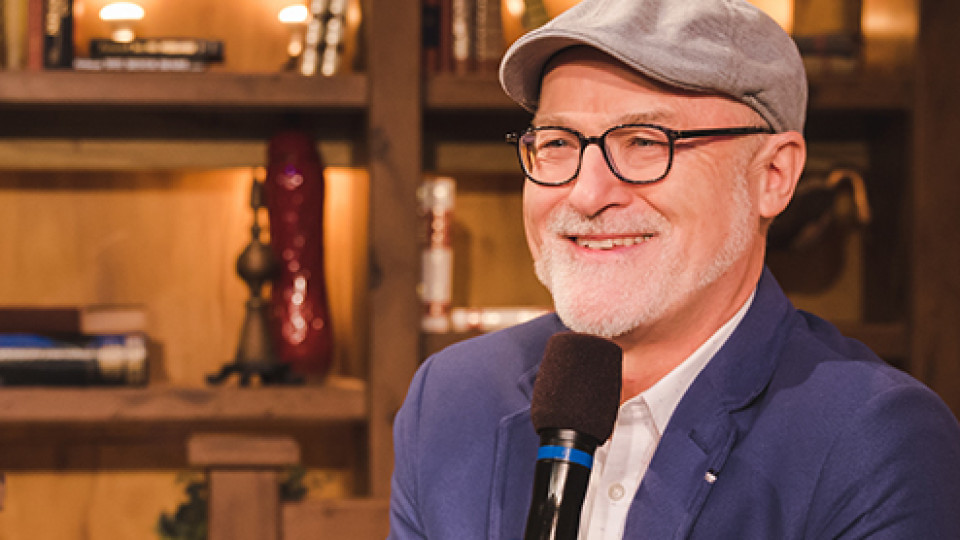Helping children grow up in homes where joyful and peaceful are a way of life is a major goal of the Life Model. Joy is how we carry forward a strong, multigenerational community identity, prevent tramatization and avoid addictions. Joyful children build strong minds that love to learn, can persevere and are resilient when the inevitable goes wrong.
Joyful Beginnings calendar
One of the simplest guides for starting life is found in the Joyful Beginnings calendar developed by Life Model author Maribeth Poole. This week-by-week guide to the first 18 months of life takes parents though the major growth and development of the brain’s control center. Parents are guided through each step needed for training every new stage of brain development. Every stage requires a timely training period. Whatever is not trained and used by the brain during this critical period is forever removed from the brain at the end of that period. Children who are not properly trained at the moment of need will lose essential mental abilities for life.
Fear bonds or love bonds
For the brain to form correctly so it can take care of relationships and identity, a child needs to live in joy and peace instead of fear. Many religious and cultural practices for child rearing that receive much approval produce children who, as adults, do very poorly. The parts of the brain needed for moral and socially appropriate lives only develop well when children live in high levels of joy followed by times of quiet in the context of a secure, loving bond with both parents.
Child needs and tasks
Here, in an introductory way, are the basic needs and tasks that must be completed by right ages for normal growth for infants and children (from the Life Model Study Guide).
THE INFANT STAGE Ideal Age: Birth > Age 4
Needs
- Joy bonds with both parents that are strong, loving, caring, secure
- Important needs are met without asking
- Quiet together time
- Help regulating distress and emotions
- Be seen through the “eyes of heaven”
- Receive and give life
- Have others synchronize with him/her first
Tasks
- Receive with joy
- Learn to synchronize with others
- Organize self into a person through imitation
- Learn to regulate emotions
- Learn to return to joy from every emotion
- Learn to be the same person over time
- Learn self-care skills
- Learn to rest
THE CHILD STAGE Ideal Age: Ages 4 > 13
Needs
- Weaning
- Help to do what he does not feel like doing
- Help sorting feelings, imaginations and reality
- Feedback on guesses, attempts and failures
- Be taught the family history
- Be taught the history of God’s family
- Be taught the “big picture” of life
Tasks
- Take care of self (one is enough right now)
- Learn to ask for what he/she needs
- Learn self-expression
- Develop personal resources and talents
- Learn to make himself/herself understandable to others
- Learn to do hard things
- Learn what satisfies
- See self through the “eyes of heaven
At this point most of the Life Model material on parenting is found in the unlikely sounding books called: The Complete Guide to Living With Men and The Red Dragon Cast Down.
Couples
Maintaining a strong and enjoyable couple bond is very challenging. Maintaining a bond requires at least adult maturity (the capacity to satisfy two or more people at the same time) and a secure attachment. On the other hand, starting a new couple-bond is usually not that hard. We generally respond to anyone who looks healthy and shows signs of lighting up when they see us.
Falling in love
“Falling in love” might better be called “falling in joy.” Joy means we are glad to be together. This euphoric experience is one that stimulates the growth of our brain’s joy center. The glances, the gazes and the growing emotions of falling in love all describe joy building. Joy production is frequently called the “chemistry between us.” Most of the rest of “falling in love” is our fantasy about who we imagine our new partner will be. Usually, about 4 months later, the disappointments start as we discover that our new partner does not match our dreams.
The most real part of falling in love is the joy we build. This joy starts to form an attachment between two people but the real question is whether we can keep that joy. The stress hormone called cortisol is the natural enemy of new joy. Cortisol begins to wipe out our new joy any time we “fall out of joy” with our partner and do not get back to joy that same day. When you add cortisol overnight the “chemistry” starts to change.
Returning to joy
One of the three things that determines our long-term enjoyment of a relationship derives from how we as a couple handles the “not glad to be together moments.” Since joy is being glad to be together then not being glad to be together is “anti-joy.” We dislike this anti-joy as much as we like joy. If we are still in anti-joy when we go to sleep, our bodies will circulate stress hormones overnight and erase any newly grown joy. This is our minds way of saying, “Don’t hold on to that joy. It did not end well.” So the first secret for “staying in love” is getting back to joy by the end of each day and every fight. There are six emotions that take us out of joy and we need help learning how to return to joy from all six. These six emotions are: sadness, anger, fear, shame, disgust and hopeless despair. You can read more about how to train your brain to return to joy in the “training the control center” section of this website. Returning to joy is also part of the THRIVE training.
The second secret to staying in love is to build some new joy every day. When people don’t return to joy they quickly stop building any new joy as well. There are many excellent ways to build joy but the best are eyes that light up to see us and a warm tone of voice.
Joy means, “I’m glad to be with you,” so the main problem with building joy occurs when I look at you and I do not like what I see. How can I be glad to be with you when you ____? [Fill in the blank.] To surmount this problem we need to see with our heart as well as with our eyes.
Heartsight and Identity
Anti-joy, also known as shame, is very useful in short doses because we are all capable of being noxious and unpleasant. We have our bad habits. We need to hear that when we do this-or-that, not even the people who love us want to be near us. Shame for two or three learning minutes is good. Shame overnight is bad—particularly if we still do not learn that we are malfunctioning. To return to joy with a partner requires us to see who they really were meant to be and see their identity more solidly than we see the ways they malfunction. Then, when they get lost and forget to act like themselves, we can help guide them back to the person they really are. This means that we must see them through the eyes of our heart and always remind them look through their hearts also. (Munchies Vols. 3, 4 and 5.) No one can be glad for long to be with a malfunction. You can’t have a relationship with a defense mechanism. Our true joy is being close to real people who are acting like themselves. We must learn to see with our hearts if we are to encourage each other and return to joy. The third secret to staying in love is to keep heartsight clear and get quick healing for the times we each forget how to act like ourselves. Those who do not live in this spiritual way fall into resentment, accusations, blaming and criticisms.
Stories of us
The fourth big secret to staying in love is a growing sense of what it means to act like myself with my partner. It may seem strange that this is accomplished through story telling. When we tell what the Life Model calls “4+ stories” we synchronize our minds internally with our relationships externally. If some part of us or our relationship is out of tune we quickly find out and have a chance to fix it. Telling 4+ stories refers to the four levels of the control center plus our left hemisphere and is a major part of the THRIVE training. One important part of a 4+ story is telling what it is really like us to do when something happens that gives us emotions.
Couples need to tell each other three stories about their day when they get home. This story telling about your life while you were apart goes a long way toward maintaining closeness during the day. Then couples need to tell three more stories before going to bed. This second set of stories is about things the two of you have done together in the past. These 4+ stories can include time with children or other people but they need to include the two of you. Consistently telling these six stories a day will produce a secure attachment. In thirty years you will still like being together.
Grandparents
Grandparents are often surprisingly different with their grandchildren than they were with their own children. Grandparents are candidates for elder maturity and have often learned from their own experience. By now most grandparents know intuitively that trying to control children is less rewarding than building joy in one’s family.
Grandparents are the best source of change for the family tree.
When you add up the time they have, how they have often outgrown their own issues and the financial resources available to grandparents, it is easy to see how grandparents are best suited to bring new skills into their extended families. Let’s look at some of the ways.
Grandparents and Joy
Good parents have mutually strengthened their brain’s joy center with each of their children. That means they have more practice with joy now than when they were parents. As grandparents they are better equipped to be joyful than they were as parents. Grandparents get better sleep at night and fewer economic pressures. Besides, most grandparents expect to be as joyful as they know how with grandbabies. For many children, their grandparents are as close to pure joy as the world can produce. This is a marvelous way to grow a strong brain and even give the grandparents some protection from Alzheimer’s and dementia.
Grandparents have impact on many more children than parents can have.
It is easy for grandparents to spend special time with each of many grandchildren if they take the time to do so. Grandparents are often the salvation for “lost” children or those with special needs. Grandparents often can reach children who are locked in conflict with their parents in ways that parents cannot.
Grandparents have time and resources to improve their “mental bananas”.
New or expecting parents have their hands and time full with all kinds of things. They have childbirth classes, painting the nursery, watching older children, night feedings and making a living to accomplish. While these things are necessary, they do not help improve how their brains will run. Parents only have the crucial control center skills that came down their family line unless they have gotten outside training. Grandparents have the time to get training and pass skills on to their children and grandchildren while they are still young. Grandparents are the most strategic source for joy and new returning-to-joy skills within a family.
Grandparents provide a large portion of childcare
In both agricultural and industrialized nations, rural and urban settings across the world, grandparents do a good deal of the childcare and child rearing. Often the cause is financial but many grandparents take the place of addicted, mentally unstable, sick or missing parents. Grandparents need to be more effective in their parenting because they have less energy to work toward results.
Things grandparents can do
Retrain the grandparents’ own “mental banana” with the skills their family tree needs with THRIVE and Life Model materials.
Give a Joyful Beginnings calendar for a baby shower gift with each baby.
Give good books on maturity for birthdays, showers and as they are needed. The Complete Guide To Living With Men should go to every bride and every father.
Build joy every chance you get with your grandchildren and your children.
Make a special time with each grandchild to get to know his or her heart.
Send this link or page to a grandparent you know.
Grandparents at large
Mature grandparents should remember that not every child has a grandparent. Even worse, some children are in worse condition because of the grandparents they do have. Reach out and include children who need grandparents in your circle of joy, love and warmth.
Natural Families
Let us consider the aspects of family that are both helpful and desirable. It is no surprise that the first thing people check when someone becomes a criminal, a success, a celebrity or even becomes sick is his or her family history. Families have a huge influence in our lives.
Families are for joy
Asking families that come for counseling to answer the question, “What are families for?” produces many answers. One answer we have never heard is that, “Families are for joy—being glad to be together.” As a result, few troubled families even think to reach joy, let alone live in joy. Families who are not motivated by joy motivate each other and transact business based on fear and avoiding pain—usually emotional pain. Who likes to live with people who plan how to hurt you, threaten you and consider it a necessity to make you feel badly? What many people do not realize is that joy is a much deeper and stronger motive than fear and pain. In addition, fear produces badly running brains and families while joy builds strength and character.




